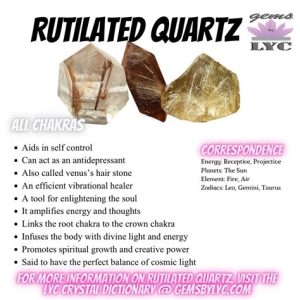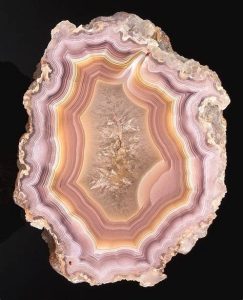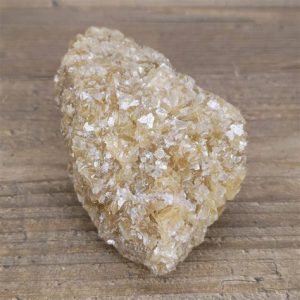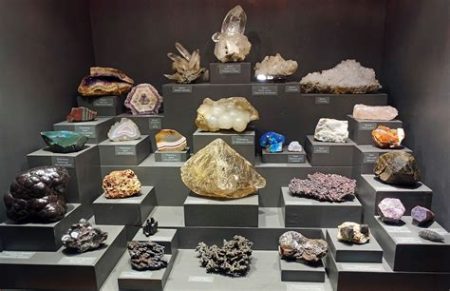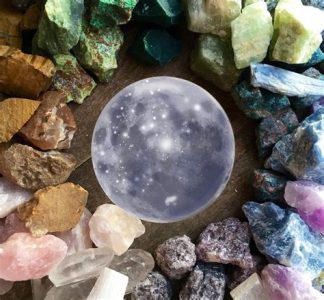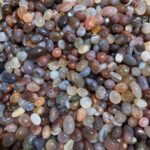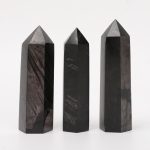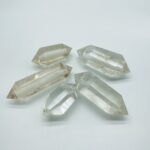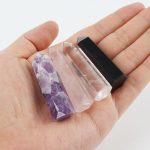Introduction
Gemstone calcite is a widely distributed mineral with diverse applications spanning various industries from construction and manufacturing to jewelry and medicine. Its unique physical and chemical properties make it a highly sought-after material, driving continuous research and exploration of its potential.

Physical Properties of Gemstone Calcite
- Color: Calcite exhibits a wide range of colors, including white, yellow, pink, orange, green, blue, and black.
- Transparency: It can be transparent, translucent, or opaque, with some varieties showing double refraction.
- Hardness: Calcite is relatively soft, with a Mohs hardness of 3.
- Cleavage: Calcite has three distinct cleavage planes that facilitate its breakage into rhombohedral shapes.
Chemical Properties of Gemstone Calcite
- Chemical Composition: Calcite is primarily composed of calcium carbonate (CaCO3).
- Solubility: It is soluble in acidic solutions, particularly hydrochloric acid.
- Effervescence: When exposed to dilute hydrochloric acid, calcite produces visible effervescence due to the release of carbon dioxide gas.
Applications of Gemstone Calcite
Construction and Manufacturing
- Building Materials: Calcite is used as a primary component in the production of cement and limestone, which are essential for construction and infrastructure.
- Glass and Ceramics: Calcite is an important ingredient in the manufacturing of glass, ceramics, and glazes, adding strength and durability.
Jewelry and Adornment
- Decorative Objects: Calcite’s vibrant colors and transparency make it an attractive material for use in decorative objects, such as vases, sculptures, and jewelry.
- Gemstones: Transparent varieties of calcite, known as Iceland spar or calcite optical calcite, are highly prized as gemstones due to their exceptional optical properties.
Agriculture and Environmental Science
- Soil Amendment: Calcite is used as a soil amendment to raise pH levels and improve soil structure.
- Water Filtration: Calcite can be used in water filtration systems to remove impurities and heavy metals.
Medicine and Healthcare
- Medical Imaging: Single crystals of calcite are used in optical devices, such as calcite polarizers and calcite prisms, for medical imaging applications.
- Pharmaceuticals: Calcite is a source of calcium for various pharmaceutical formulations.
Pain Points and Motivations
Pain Points:
- Durability: Calcite’s relatively low hardness can limit its use in certain applications requiring high wear resistance.
- Solubility: Calcite’s solubility in acidic solutions can pose challenges for its use in environments with acidic conditions.
Motivations:
- Sustainability: The abundance and natural origin of calcite make it a sustainable material with minimal environmental impact.
- Versatility: Calcite’s diverse properties enable its use in a wide range of applications, driving innovation and cross-industry collaborations.
Embracing Calcite’s Versatility: Generating New Applications
To fully harness the potential of calcite, researchers are exploring new applications and innovative ways to utilize its properties. One emerging concept is calcitization, a process that involves converting non-calcitic materials into calcite through chemical or biological means. This novel approach opens up possibilities for:
- Biomimetic Materials: Creating calcite-based structures inspired by natural processes, such as seashells and coral reefs, for applications in biomedicine and sustainable construction.
- Functional Coatings: Depositing calcite on surfaces to enhance their corrosion resistance, adhesion properties, and optical characteristics.
Tips and Tricks for Using Gemstone Calcite
- Handle with Care: Calcite’s low hardness requires careful handling to avoid scratches or breakage.
- Protect from Acids: Avoid exposing calcite to acidic environments to prevent dissolution.
- Maintain Moisture: Calcite can become brittle when dehydrated, so storing it in a moist environment is recommended.
Step-by-Step Approach to Incorporating Calcite into Applications
Step 1: Identify Requirements
Determine the specific properties and characteristics required for the intended application.
Step 2: Assess Calcite’s Suitability
Analyze the physical and chemical properties of calcite to determine its suitability for the intended purpose.
Step 3: Modify or Enhance Properties (Optional)
Consider modifications or enhancements to calcite’s properties, such as surface treatments or incorporating additives, to meet specific requirements.
Step 4: Test and Validate Performance
Thoroughly test the performance of calcite in the intended application to ensure it meets expectations.
Tables
Table 1: Physical Properties of Calcite
| Property | Value |
|---|---|
| Color | Varies |
| Transparency | Transparent to Opaque |
| Hardness (Mohs) | 3 |
| Cleavage | Rhombohedral |
Table 2: Chemical Properties of Calcite
| Property | Value |
|---|---|
| Chemical Composition | CaCO3 |
| Solubility | Soluble in Acidic Solutions |
| Effervescence | Yes, with HCl |
Table 3: Applications of Gemstone Calcite
| Industry | Application |
|---|---|
| Construction and Manufacturing | Cement, Limestone, Glass, Ceramics |
| Jewelry and Adornment | Decorative Objects, Gemstones |
| Agriculture and Environmental Science | Soil Amendment, Water Filtration |
| Medicine and Healthcare | Medical Imaging, Pharmaceuticals |
Table 4: Pain Points and Motivations for Calcite Use
| Pain Point | Motivation |
|---|---|
| Durability | Sustainability, Versatility |
| Solubility | Environmental Impact, Cross-Industry Collaborations |

